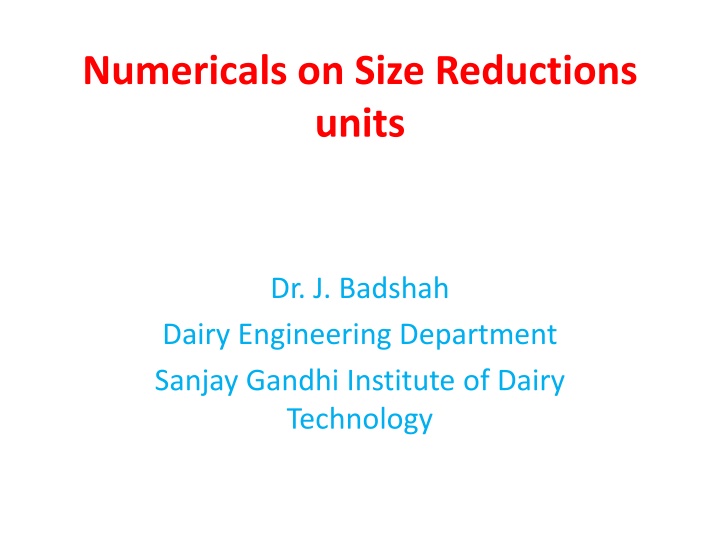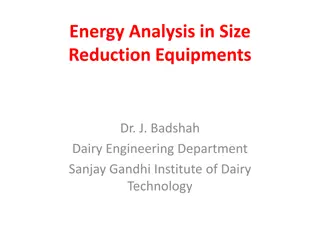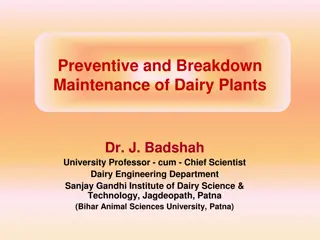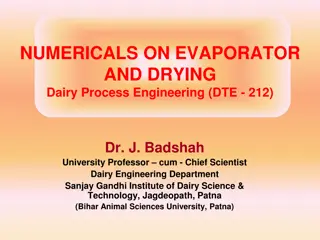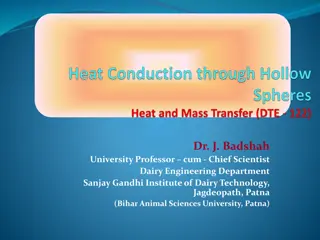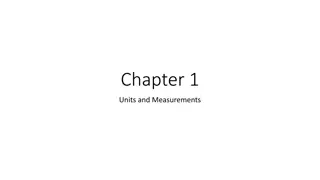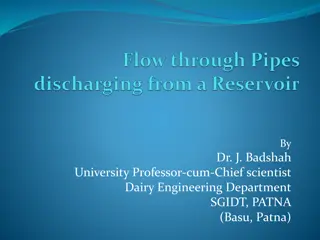Numericals on Size Reduction Units in Dairy Engineering
Explore numerical examples related to size reduction units in the field of Dairy Engineering, covering critical rotational speeds in ball mills, grinding operations in pulse mills, and energy requirements for particle size reduction. Learn calculations for operational speeds, Rittinger's and Kick's constants, and particle average sizes. Enhance your understanding of key concepts in dairy technology.
Download Presentation

Please find below an Image/Link to download the presentation.
The content on the website is provided AS IS for your information and personal use only. It may not be sold, licensed, or shared on other websites without obtaining consent from the author.If you encounter any issues during the download, it is possible that the publisher has removed the file from their server.
You are allowed to download the files provided on this website for personal or commercial use, subject to the condition that they are used lawfully. All files are the property of their respective owners.
The content on the website is provided AS IS for your information and personal use only. It may not be sold, licensed, or shared on other websites without obtaining consent from the author.
E N D
Presentation Transcript
Numericals on Size Reductions units Dr. J. Badshah Dairy Engineering Department Sanjay Gandhi Institute of Dairy Technology
Numerical on Ball Mill Q.1.What is critical rotational speed in revolution per second, for a ball mill of 1.2 m diameter charged with 70 mm diameter balls. Soltion: Critical speed for a ball mill Nc = 1/2 ( 2g/(D-d)) Nc = 1/2x3.14 ( 2x 9.81/(D1.2-d70x10-3)) = 0.663 rps Q.2. A ball mill of 1.8 m diameter is loaded with steel balls each having a diameter of 6 cm. The rotational speed of the ball is kept at 75 % of the critical speed. Calculate The operational speed of the ball mill in rpm. Solution: Critical Speed of ball mill = Nc = 1/2 ( g/(R-r)) Nc = 1/2x 3.14 ( 9.81/(0.9-0.03)) = 0.534 rps = 32.04 rpm However, Operational speed of ball mill = 0.75 x 32.04 = 24.03 rpm
Numericals A pulse mill grinds Bengal gram of 2 mm volume- surface mean diameter to powder of 100 micron volume-surface mean diameter. Calculate the ratio of Rittinger s to Kick s constant in the grinding opearation.
Numerical The fineness modulus of the ground maize feed is 3.7. Calculate the average size of the particle. It is found that the energy required to reduce particles from a mean diameter of 10 mm to 3 mm is 11 KJ/Kg. Using Rittinger s law calculate the energy requirement to reduce the same material from a diameter of 1 mm to 0.3 mm.
